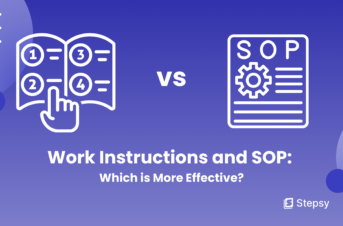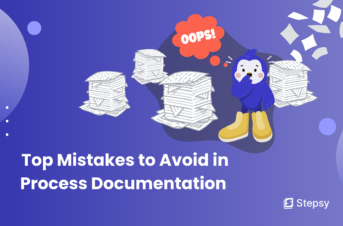Process Improvement Steps for Better Workflows
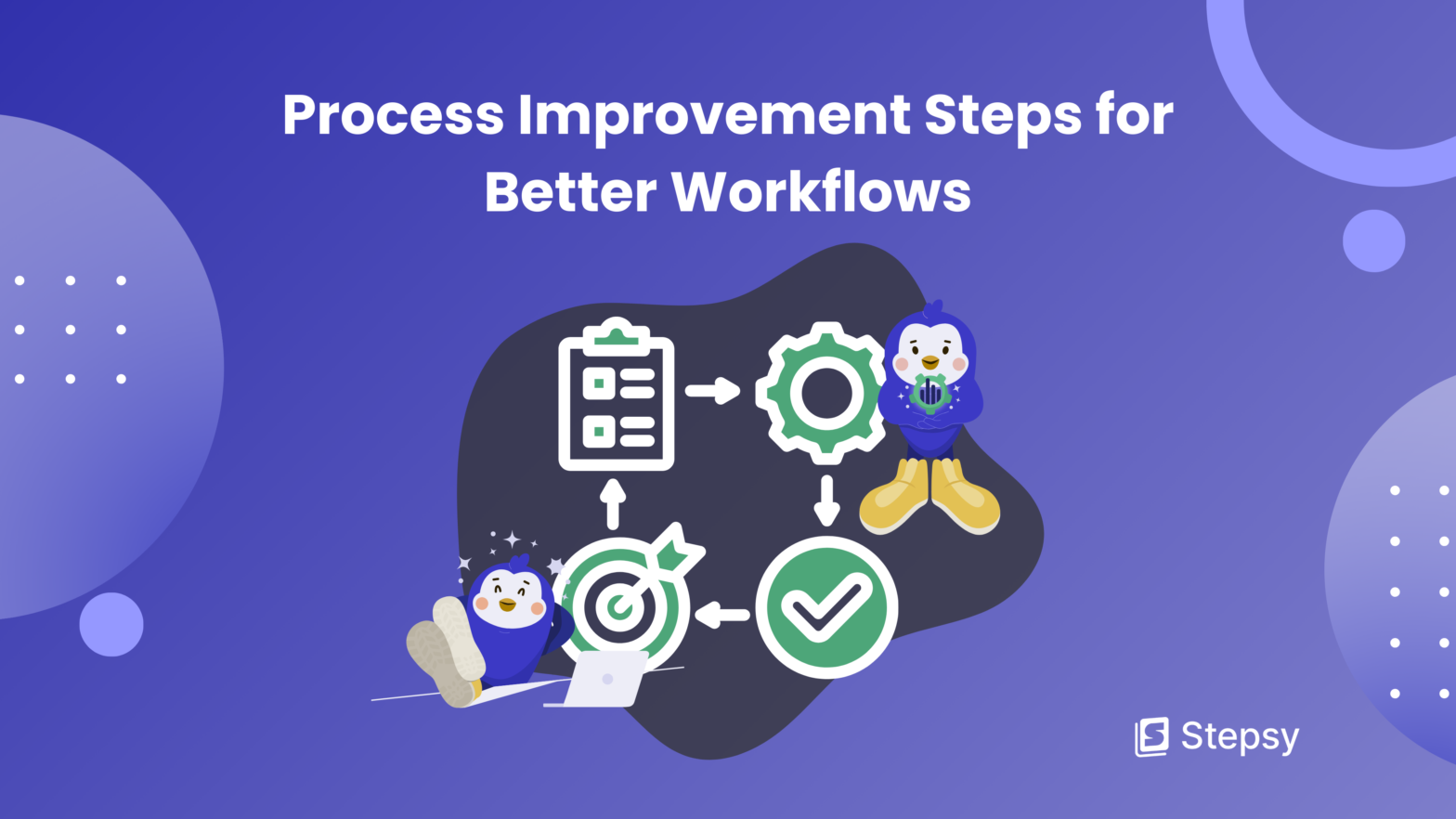
 Iryna Smuk • 24 Jun 2024
Iryna Smuk • 24 Jun 2024
Workflow should be like a well-oiled machine — tasks moving smoothly from one step to the next, with minimal friction. Sometimes we grow accustomed to the procedures that we use. But if you noticed unexpected cost increases, a sudden slowdown in productivity, or the abrupt instability of previously reliable procedures. We have a solution for you — Steps for Process Improvement!
Process improvement is crucial for enhancing efficiency, profitability, and employee performance within any organization. Three words can explain how to improve a process at work — identify, analyze, and enhance.
Improved workflows not only eliminate unnecessary steps and delays, saving time and resources but also lead to higher quality of work. Moreover, if an organization doesn’t continuously improve its processes, it risks falling behind.
So, if you’re trying to keep up with the constantly changing business environment, follow this article where we explain process improvement steps for better workflows.
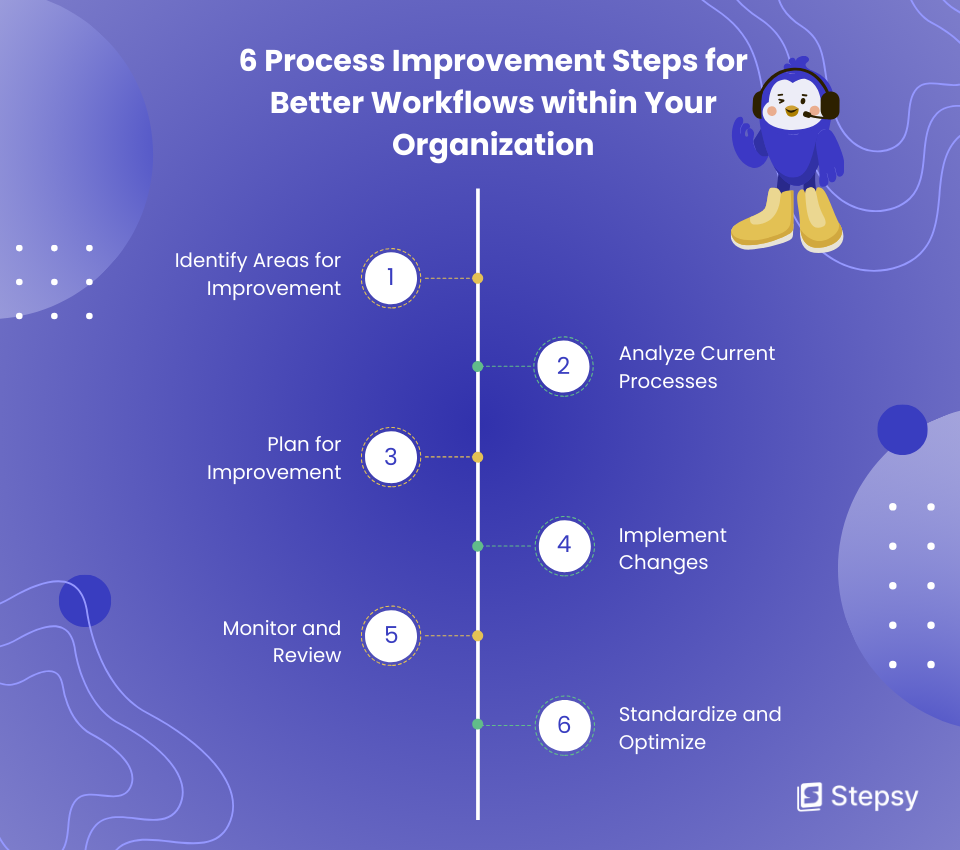
Step 1: Identify Areas for Improvement
The first business process improvement step is identifying bottlenecks, inefficiencies, and areas for improvement. You need to conduct a deep dive into your existing workflows. Here is how to approach it:
- Visualize your current processes — steps, inputs, outputs, and dependencies. Document the flow of both formal and informal processes from start to finish, decision points, and interactions.
- Look for bottlenecks — points in the workflow where tasks tend to pile up or experience delays. They’ll indicate areas of congestion or resource constraints that impede the smooth flow of work.
- Compare your process against industry standards or competitors. You can find places for development and gaps by carrying it out.
Additionally, during this step, you must collect the team’s insights and feedback who are actively engaged in the procedures. They, like no one other, have firsthand experience with the process and encounter challenges, workarounds, as well as pain points daily. Your most important asset when it comes to business process improvement is your workforce.
Step 2: Analyze Current Processes
With your current identified areas for improvement, it’s time to take the next process improvement important step – thorough data collection and analysis.
Firstly, it is important to define key performance indicators (KPIs) that align with the objectives of the process. These metrics may include cycle time, throughput, error rates, customer satisfaction scores, or resource utilization.
Don’t hesitate to utilize various data collection methods such as surveys, interviews, observation, and analysis of existing documentation and records. You need to collect both quantitative data (numbers, measurements) and qualitative data (descriptions, observations).
Here we have some data analyzing techniques for you:
- Look for patterns or trends in the data over time. By doing so, you will identify areas where performance is consistently lagging and underperforming.
- Use statistical tools to identify correlations between different variables within the process. This can help pinpoint the root causes of problems.
- Utilize software or online tools to visually represent the process data. Today, data collection goes hand in hand with technology tools such as workflow management systems, data analytics software, and process mining tools to automate data collection and analyze large datasets efficiently.
Data is powerful, but it’s only half the story. So, you have to identify the underlying reasons behind the inefficiencies you’ve discovered. Here are the best ways to perform it.
The Five Whys
Simply ask “why” five times in a row, starting with the problem statement and digging deeper. Such a chain of causality will reveal the root issue.
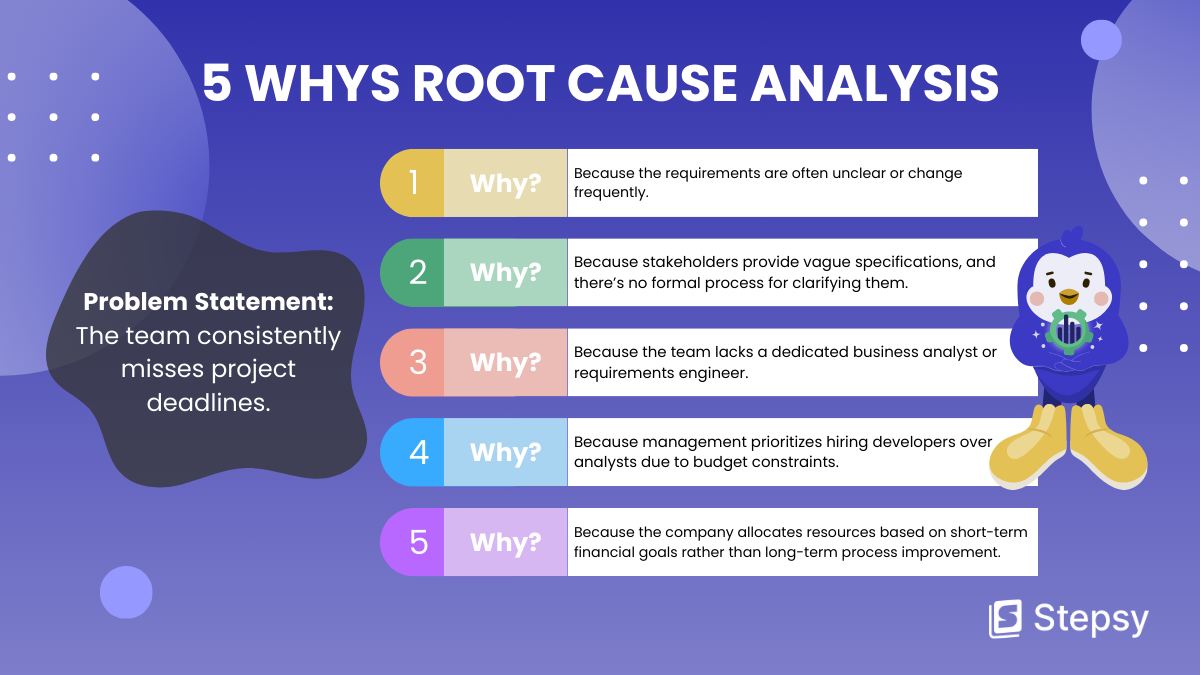
Fishbone (Ishikawa) Diagram
The problem must be represented by the fishbone diagram’s head, and the main group reasons are shown along the fishbone. Categories typically include people, processes, equipment, materials, and environment. After this brainstorm with team members to identify root causes within each category.
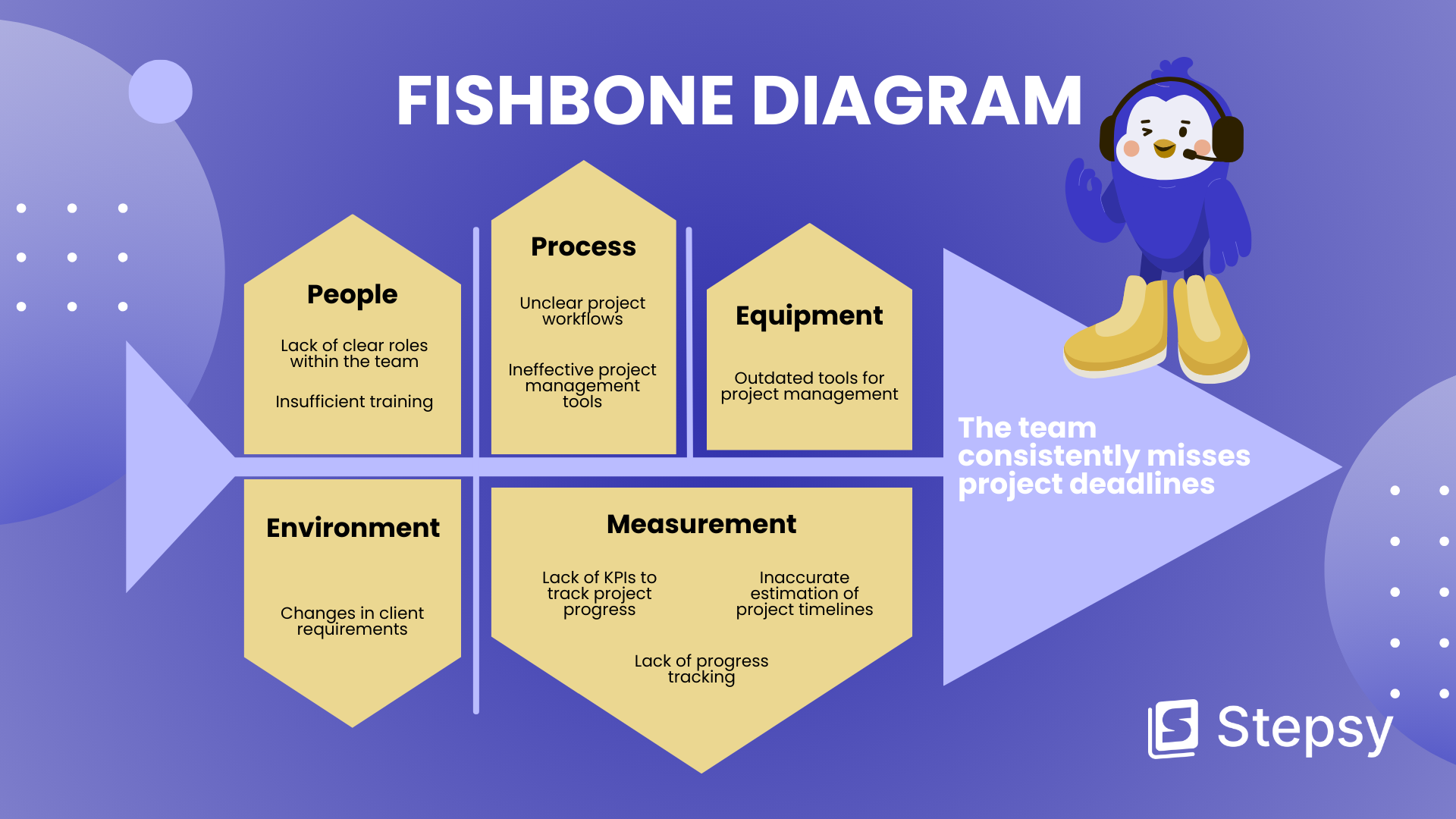
Fault Tree Analysis (FTA)
Start by identifying a failure and outlining every possible mode of failure. Each failure mode is verified or disregarded by the data until the underlying cause is found.
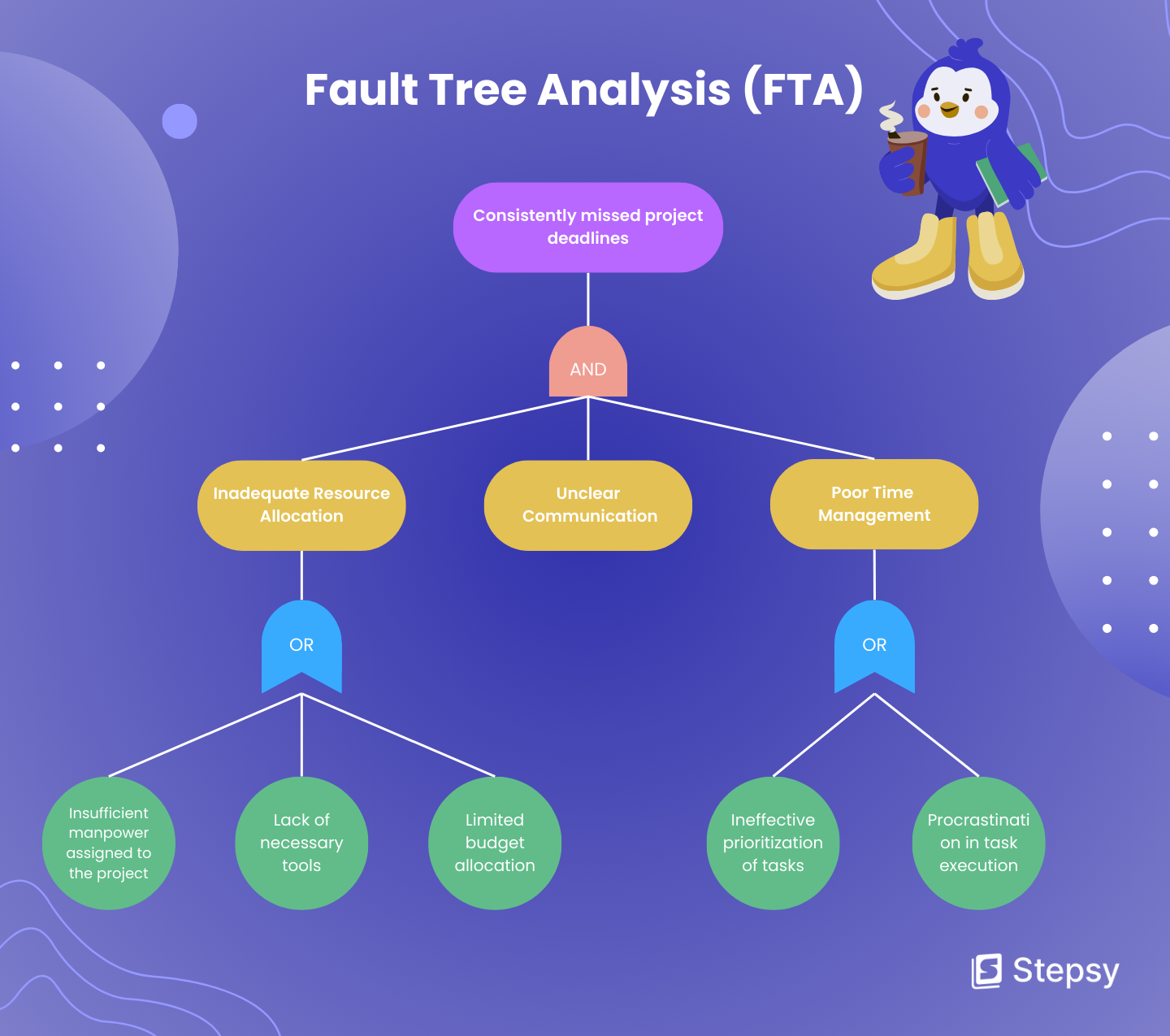
Step 3: Plan for Improvement
The next step to process improvement is to develop a comprehensive plan, which involves setting clear objectives and strategizing interventions. First, decide what you want to accomplish. Defining specific, measurable, achievable, relevant, and time-bound (SMART) goals is paramount for guiding the process improvement initiative. Without well-defined goals, projects can lose focus and effectiveness.
Now that you have figured out areas for improvement and what you want to achieve, you can truly begin to develop improvements for your process. Start with brainstorming potential solutions to address the identified problems. Remember to involve cross-functional teams in this process. There is never a terrible idea – especially in the early stages of ideation.
Here, we prepared some of the most frequent process improvements for you:
| Streamline an excessively lengthy process | If your process feels overly long and convoluted |
|
| Enhance quality in the process | If the quality of work produced by your process needs improvement |
|
| Enhance communication and collaboration | If the process lacks seamless communication and collaboration |
|
| Overcoming external obstacles | If external challenges hinder your process |
|
| Improve transparency | If the process lacks transparency |
|
| Catch errors early | If the process is prone to errors |
|
Step 4: Implement Changes
With a newly developed process improvement plan in mind, the next act is to put those changes into action. Don’t jump into multiple process changes. They should not be implemented all at once as this could be confusing.
The best way to prioritize them is to plot each improvement idea on a matrix, considering its potential impact on the process versus its feasibility. Focus on high-impact, easy-to-implement changes first.
Don’t be surprised if implementing process changes meets resistance from employees. People naturally refuse changes. The best practice for managing it and ensuring the smooth adoption of new processes is change management.
Here are some of the best practices to follow to guarantee a seamless transition:
- Clearly explain the changes’ justification. Be open and honest while addressing issues.
- Involve staff members in the change process by asking and considering their input, as well as involving them in decision-making if possible.
- Give enough assistance and training to help employees become used to the new procedures. Think about utilizing workshops, tutorials, or one-on-one coaching.
- Acknowledge and reward people, who accept the changes and help make them happen.
Step 5: Monitor and Review
Now, you should keep an eye on the fruits of your work. Compare the initial goals you specified for your novel procedure with the result. Define if the new procedure worked well for you and if the people who utilize it are satisfied with the final changes.
Align measurable and quantifiable key performance indicators (KPIs) with the objectives to ensure they reflect the desired outcomes. Look back at the KPIs you defined before, and identify if they improved. It allows you to track progress over time and compare performance before and after implementing changes.
Regularly reviewing process performance is a never-ending cycle. In a dynamic business environment, continuous assessment enables you to make sure that your processes are always in line with organizational goals and objectives.
Step 6: Standardize and Optimize
If your workflow gets better with process improvement, it’s time to solidify them and pave the way for further optimization. Documenting all process changes is important to ensure clarity, consistency, knowledge transfer, and accessibility.
We recommend creating visual process maps or flowcharts of improved processes. Another valuable thing is to develop detailed SOPs for each process. It includes step-by-step instructions, roles, and responsibilities.

Furthermore, applying lean principles and considering automation can further optimize your processes for efficiency and effectiveness. Some repetitive tasks or data processing can often be automated. It will free up human resources for more strategic activities.
Conclusion
Hence, process improvement isn’t just a catchphrase, but the foundation for enhanced productivity, higher quality, lower costs, and increased customer satisfaction. We’ve explored the six key steps of process improvement, which is a powerful technique for making your workflows better within your company. To stay agile and maintain a competitive edge in today’s rapidly evolving business landscape, you must adopt a culture of innovation and continual improvement.
Keep in mind that process improvement is an ongoing journey of adaptation and optimization.
It can be a complex endeavor. So, don’t hesitate to seek the professional assistance of experienced consultants or software solutions that can streamline data collection, analysis, visualization, and, documentation, making process improvement more efficient and data-driven.
It’s time to start the journey of continuous improvement and take the first step today!

